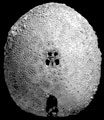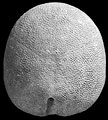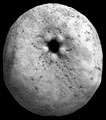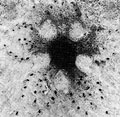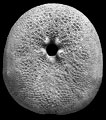The Echinoid Directory
Actapericulum Holmes, 1995, p. 120
| Diagnostic Features |
|
|---|---|
| Distribution | Early Miocene of South Australia. |
| Name gender | neuter |
| Type | Actapericulum bicarinatum Holmes, 1995, p. 120; by original designation. |
| Species Included |
|
| Classification and/or Status |
|
| Remarks |
|
